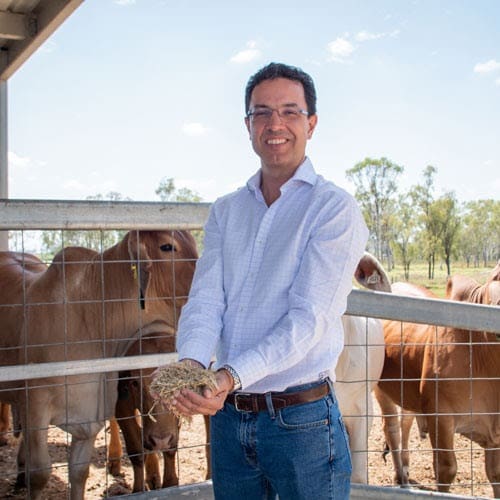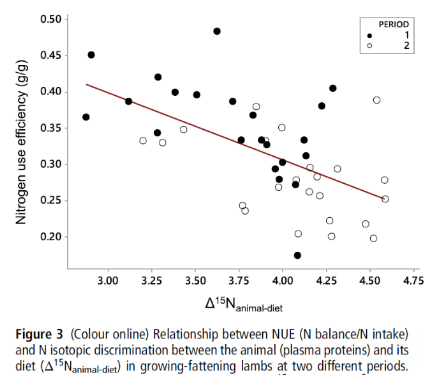
Associate Professor Luis Prada e Silva – his UQ team has developed a test for nitrogen-efficiency in cattle.
A TEST developed to select nitrogen-efficient cattle could also have applications for sheep, according to a University of Queensland researcher.
Associate Professor Luis Prada e Silva from UQ’s Queensland Alliance for Agriculture and Food Innovation and his team have developed a test using tail hair samples to identify an animal’s ability to recycle nitrogen, a trait that allows ruminants to produce extra protein.
Associate Professor Prada e Silva said the collaborative project with the Queensland Department of Agriculture and Fisheries and Meat & Livestock Australia Donor Company had important applications for producers.
“Selecting animals that are more efficient in using nitrogen would be very useful to increase performance in low protein diets, such as during the dry months in the north.
“We have demonstrated that the efficiency of the animals is related to their ability to maintain high nitrogen in the body and not lose that in the urine,” Dr Prada e Silva said.
“This trait has about 40 percent heritability, which opens a new door for genetic selection.
“We can also use this trait to identify animals that will respond to an M8U supplement, which potentially allows primary producers to separate animals that will give a good response from those that won’t.”
In a complementary study, also funded by MLA, Dr Prada e Silva said the tail hair test was also able to identify cows with better reproductive performance.
“This is important because better nitrogen efficiency in cows was associated with better body condition score and better fertility,” he said.
With further research, test could allow selection of sheep
Dr Prada e Silva said the research results indicated that this test could be used to select sheep with likely better feed conversion and reproductive performance in low feed quality-quantity periods, such as shedding sheep in arid areas.
The feed conversion of terminal lambs, as for cattle in feedlots, will likely not be related to this trait, as the diets used in feedlots are not protein deficient.
“What this test could be used for though, is to select for animals that don’t need as much protein during feedlotting and therefore minimize the environmental impact of using high-protein diets (manure production and N2O emissions).”
Dr Prada e Silva said previous studies in cattle and sheep had demonstrated the relationship between the natural abundance of nitrogen isotopes (15N:14N ratio) with dietary conditions and nitrogen use efficiency.
“What we have done is use this concept and develop it into an applicable index for our conditions, using the tail hair as the tissue of choice.”
He said the graph below, published in Science Direct, is showing that lambs with better nitrogen use efficiency have lower 15N abundance in plasma proteins.

Results from French research showing lambs with better nitrogen use efficiency have lower 15N abundance in plasma proteins.
“Now, in this French study, the variation in 15N was caused by multiple factors, such as different diets and age.
“In our case, we wanted animals that were in the same diet and age, so the variation observed in 15N could be attributed only (or mostly) to the individual ability to preserve nitrogen.”
Dr Prada e Silva said further research would be needed to validate an applicable index and test for use in sheep, but testing and selection could be done with a sample of wool.
Fibres hold a wealth of information
QAAFI research scientist Dr Karen Eyre said collecting the tail hair of cattle was a minimally invasive procedure.
“There are no special storage or transport requirements,” she said.
“We simply collect the samples, bring them back and analyse them for tail hair isotopes.
“We’re looking for the animals that have less of a certain type of nitrogen in their tail hair.”
She said the hair shaft held a wealth of information.
“This is different to collecting DNA because we don’t need the bulb at the top of the tail hair but can measure the isotope at any part of the hair shaft,” Dr Eyre said.
“If we had a really dry period, we could measure back down the hair shaft and find those animals that are more efficient at using nitrogen during that time and either maintained their weight or at least didn’t lose as much weight as the rest of the herd.”
Dr Prada e Silva’s team is now concentrating on commercialising the findings.
“There are still questions that need to be answered, but the next step is to find a commercial partner to take this into the market and make it available to the beef cattle industry in Australia,” he said.

HAVE YOUR SAY